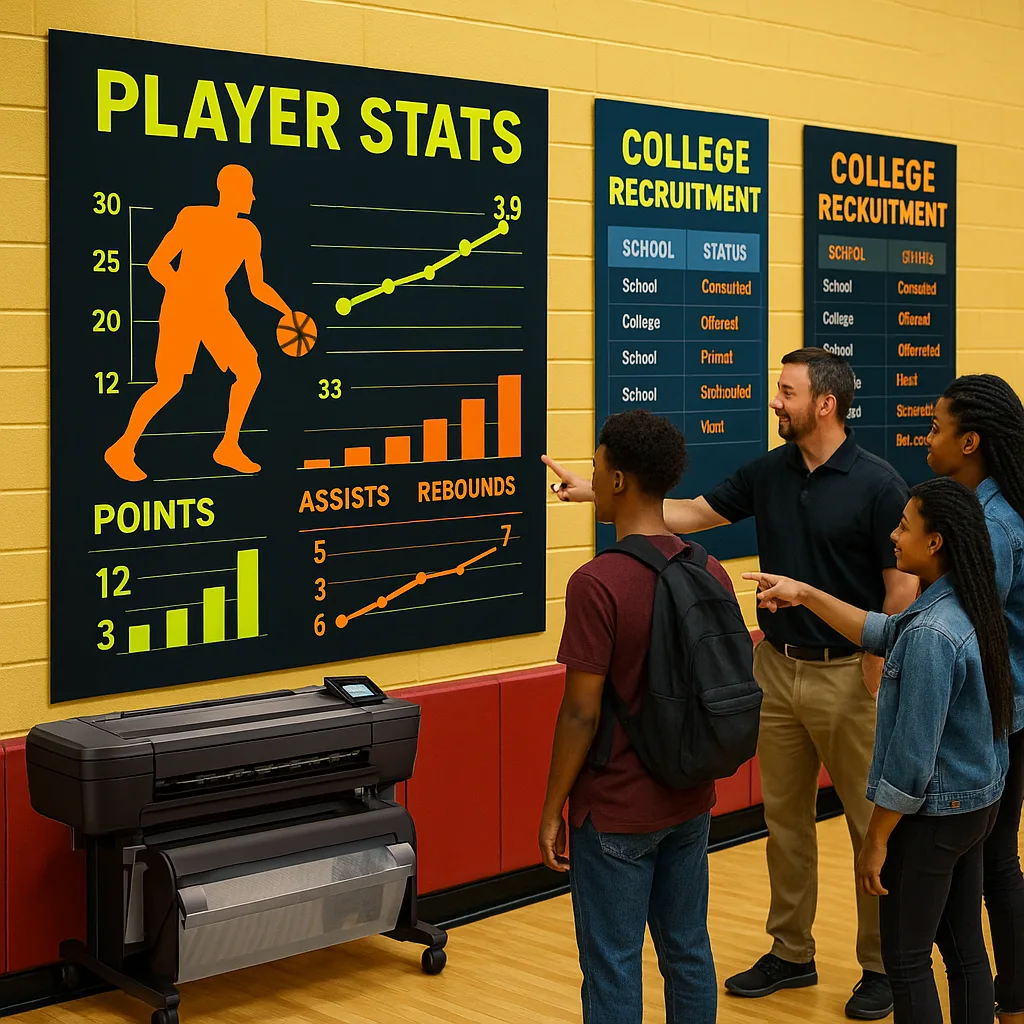
Data Walls That Heal: Trauma-Informed Visual Tracking
In today’s data-driven educational landscape, visual progress tracking has become standard practice. Yet traditional data walls can inadvertently trigger anxiety, foster unhealthy competition, and even retraumatize vulnerable students. As a curriculum director who has overseen multiple assessment cycles, I’ve witnessed firsthand how thoughtfully designed visual displays can either heal or harm. The solution lies in implementing trauma-informed approaches that celebrate individual growth while maintaining student dignity. With the right poster print machine for trauma-informed data walls, schools can create displays that motivate without marginalizing.
Understanding Trauma-Informed Visual Progress Tracking
Trauma-informed education recognizes that many students carry invisible wounds that affect their learning. According to the National Child Traumatic Stress Network, more than two-thirds of children experience at least one traumatic event by age 16. Traditional data walls that publicly rank students or highlight deficits can reactivate these traumas, creating barriers to learning rather than pathways to growth.
The neuroscience is clear: when students feel threatened or exposed, their amygdala activates, shutting down higher-order thinking. This fight-or-flight response makes learning impossible. Conversely, environments that prioritize emotional safety enable the prefrontal cortex to engage, facilitating deep learning and retention.

A trauma-informed approach to data visualization shifts focus from comparison to individual progress. Rather than displaying class rankings or highlighting who hasn’t met benchmarks, these displays celebrate growth trajectories, effort, and personal bests. This paradigm shift requires both philosophical realignment and practical tools for implementation.
Core Principles of Healing Data Walls
Student Ownership of Data
Privacy-First Design
Growth Over Achievement
Implementing Privacy-Conscious Display Methods
Privacy-conscious data walls protect student dignity while maintaining accountability. Here’s how to implement them effectively:
Coded Systems: Replace names with student-selected symbols, animals, or avatars. Students know their identifier, but peers cannot make comparisons. A Education Express 24″ Poster Maker Package A can produce vibrant coded charts that maintain confidentiality.
Portfolio Walls: Create individual progress portfolios displayed in personal folders. Students control when and what to share. This approach builds agency while maintaining privacy.
Aggregate Displays: Show class-wide progress without individual data points. Celebrate collective growth while protecting individual privacy.
Opt-In Sharing: Allow students to choose whether their progress is displayed publicly. This respects autonomy and builds trust.
Practical Framework for Growth-Focused Visual Displays
The framework above illustrates how to shift from achievement-only metrics to holistic growth indicators. Each component can be visualized using different display methods that honor student privacy while celebrating progress.
Creating Your Poster Print Machine for Trauma-Informed Data Walls
Implementing trauma-informed data walls requires the right tools. A quality poster printing system enables quick updates, personalized displays, and professional-quality visuals that respect student dignity. Here’s how to maximize your investment:
Design Considerations
• Use calming colors (blues, greens) rather than red/green success indicators • Include white space to reduce visual overwhelm • Incorporate student artwork to personalize displays • Create modular designs for easy updates
Technical Requirements
The best poster maker for schools should offer: • High-resolution printing for clear data visualization • Durable materials that withstand frequent updates • Cost-effective operation (under $2 per poster) • Easy-to-use design software
Student-Centered Goal Visualization Techniques
Moving beyond traditional data walls means embracing creative visualization methods that empower students. These techniques transform sterile metrics into meaningful, personalized learning journeys.
Learning Pathways
Visual roads showing individual progress toward goalsImplementation
Students design their own pathway posters, adding milestones as they progress. Each achievement gets a sticker or symbol, creating a personalized journey map.Growth Gardens
Progress visualized as plants growing over timeHow It Works
Each skill area becomes a plant that grows with mastery. Students water their gardens by demonstrating progress, watching their learning bloom visually.Mountain Climbs
Goals as peaks with progress marked at base campsStudent Agency
Students set their own peaks and track ascent. Different mountains represent different goals, allowing for differentiated objectives.Implementation Strategies for Districts
As a district leader who has overseen multiple curriculum cycles, I’ve learned that successful implementation requires systematic planning. Here’s a research-based approach to rolling out trauma-informed data walls district-wide:
Phase 1: Professional Development (Months 1-2)
Begin with comprehensive training on trauma-informed practices. Partner with mental health professionals to help teachers understand the neuroscience behind student stress responses. Introduce the concept of healing-centered engagement, moving beyond trauma-informed to trauma-responsive practices.
Phase 2: Pilot Programs (Months 3-4)
Select 3-5 pilot classrooms across grade levels. Provide each with access to poster printing resources and design support. Document what works, gathering both teacher observations and student feedback through surveys and focus groups.
Phase 3: Refinement and Expansion (Months 5-6)
Analyze pilot data to identify best practices. Create a toolkit with templates, design guidelines, and implementation protocols. Begin expanding to additional classrooms while maintaining support for early adopters.
Phase 4: District-Wide Rollout (Months 7-12)
Scale successful practices across all schools. Establish peer mentoring systems where pilot teachers support new implementers. Create a repository of successful designs and share monthly highlights to maintain momentum.
Budget Considerations: • Initial equipment: $3,000-8,000 • Annual supplies: $500-1,000 • Professional development: $2,000-5,000 • Total first-year investment: $5,500-14,000
Measuring Success: Beyond Test Scores
Success metrics for trauma-informed data walls extend beyond academic achievement. Track these indicators to ensure your approach truly supports student wellbeing:
Addressing Common Concerns and Resistance
Change invariably meets resistance. Here’s how to address common concerns when implementing trauma-informed data walls:
“We need accountability and transparency.”
Trauma-informed approaches don’t eliminate accountability—they reframe it. Students remain responsible for their growth, but progress is measured individually rather than comparatively. Teachers can still track and report data; the difference lies in how it’s displayed and discussed.
“Competition motivates students.”
Research shows that while competition motivates some students, it demotivates many others—particularly those who have experienced trauma. Intrinsic motivation, fostered through personal goal-setting and growth celebration, proves more sustainable and inclusive.
“This seems like extra work.”
Initially, yes—but the long-term benefits outweigh the investment. Students who feel safe and valued engage more deeply, reducing behavioral issues and increasing academic achievement. The right tools, like an efficient poster printing system, streamline the process.
“Parents want to see rankings.”
Educate parents about the research supporting growth-focused approaches. Share individual progress reports that show trajectory rather than comparison. Most parents, once they understand the benefits, enthusiastically support methods that reduce their child’s anxiety.
Transform Your Data Walls Today
Creating trauma-informed data walls isn’t just about being sensitive—it’s about maximizing learning for all students. When we honor individual journeys and celebrate growth over comparison, we create classrooms where every child can thrive.
Questions? Call our education specialists at 866-788-7900







